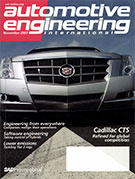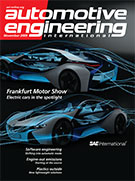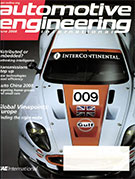Magazine

SAE Off-Highway Engineering 2013-04-04
2013-04-04
Hybrids step forward Electric and hydraulic systems trim fuel consumption and emissions, boost performance. Braking for safety Researchers developed a simplified ABS/EBS ECU test bench to research the brake force control function of the EBS system using HIL simulation technology. A metered look at dosing pumps High delivery accuracy, low weight, and dependably long life have made solenoid-operated pumps widely used in mobile applications.



















